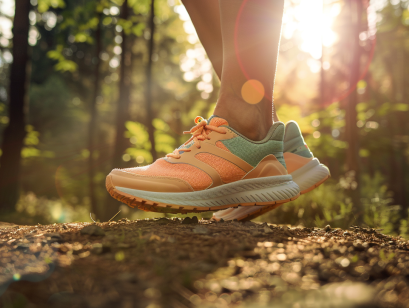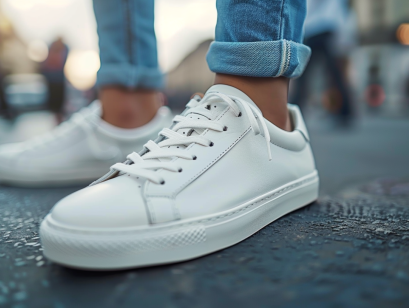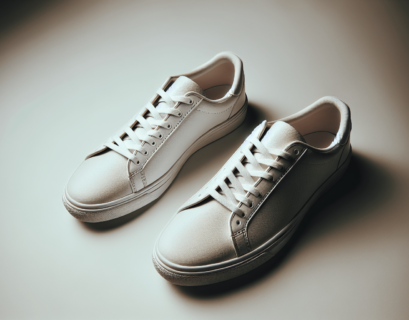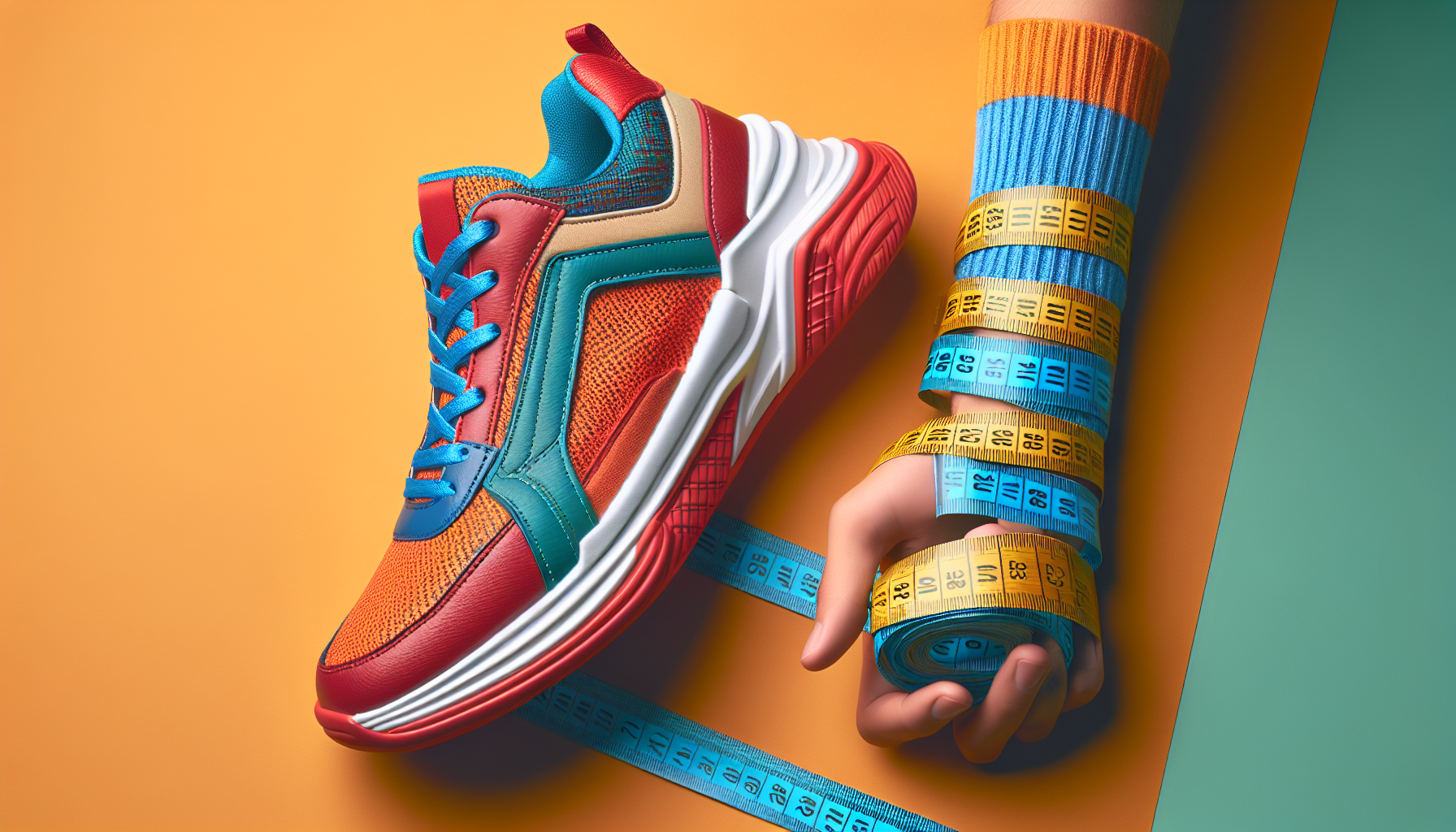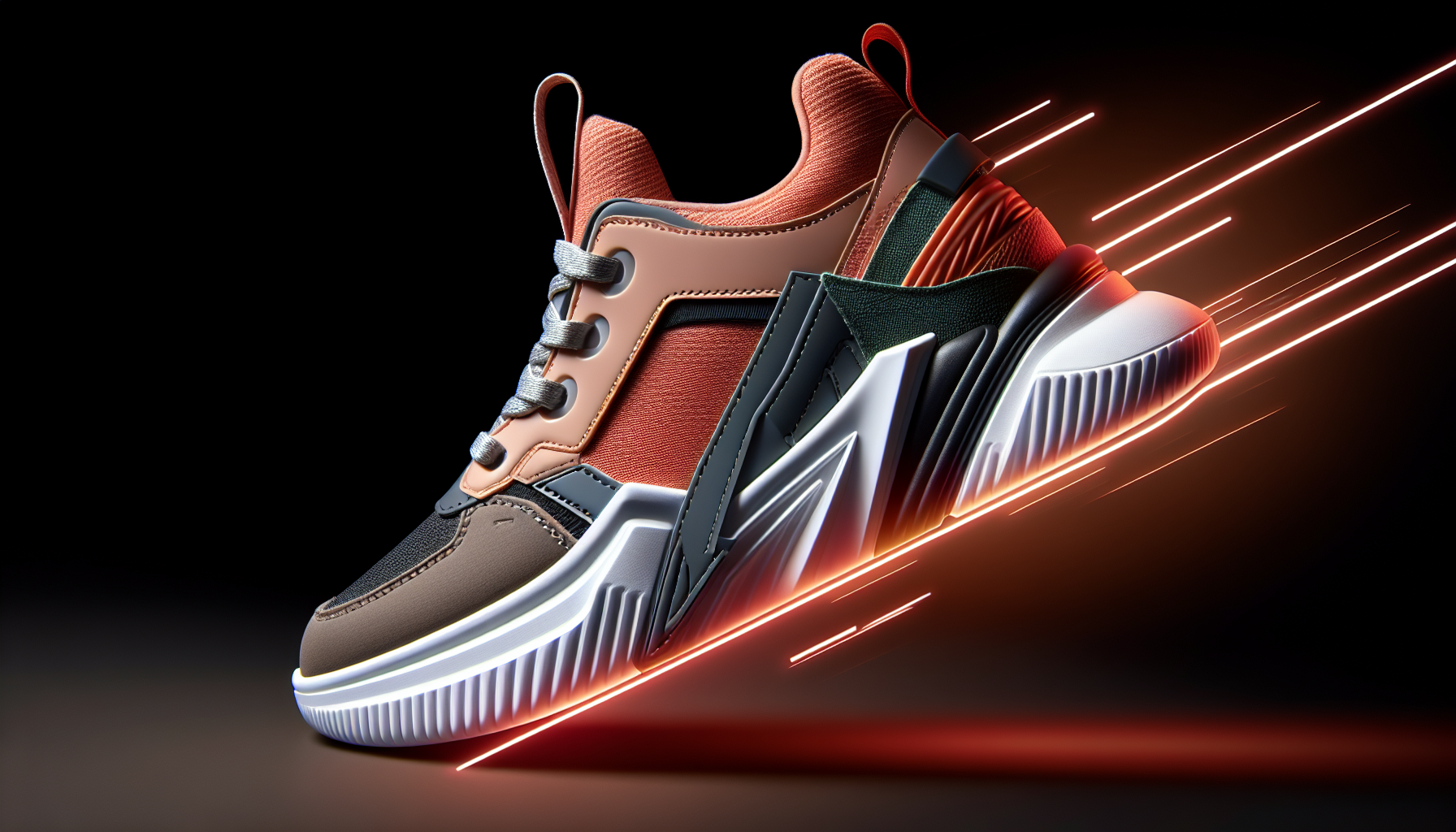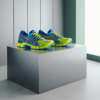You love staying ahead of the latest sneaker trends, but you also want to make sure you’re buying the real deal. With the market flooded with counterfeit releases, it’s important to know how to spot fake sneaker trend releases. In this article, we will explore the top ways to ensure that the sneakers you’re purchasing are authentic and of the highest quality. You’ll discover expert tips and tricks that will help you navigate through the sea of fakes, so you can rock the hottest sneakers with confidence knowing that you’ve made a genuine purchase.
Understanding the Sneaker Market
Sneakers have become more than just footwear; they have transformed into a cultural phenomenon. As a sneaker enthusiast, understanding the sneaker market is crucial to avoid falling prey to fake releases. By staying informed about market trends and the significance of sneaker releases, you can ensure that you are investing in genuine products and supporting the brands you love.
Basics of sneaker market trends
The sneaker market is constantly evolving, with new releases flooding the shelves and online stores regularly. To navigate this ever-changing landscape, it’s essential to stay updated on the latest trends. Researching popular styles and collaborations and understanding their demand among sneaker enthusiasts can help you identify authentic releases from knock-offs.
Significance of sneaker releases
Sneaker releases are highly anticipated events in the sneaker community. They create excitement and frenzy among collectors and enthusiasts who eagerly wait for limited-edition drops. Unfortunately, this level of desirability also attracts counterfeiters looking to cash in on the hype. By recognizing the significance of sneaker releases, you can better understand the motivation behind fake releases and take precautions to avoid falling victim to scams.
Popular Sneaker Brands Vulnerable to Fake Releases
When it comes to sneaker brands, there are a few names that immediately come to mind. Nike, Adidas, Puma, and Under Armour have all made significant contributions to the sneaker market. However, their popularity also makes them prime targets for counterfeiters who attempt to imitate their iconic models.
Nike and its imitation models
Nike is undoubtedly one of the most counterfeited sneaker brands globally. With collaborations like Air Jordan and Off-White gaining immense popularity, fake Nike sneakers flood the market. Identifying genuine Nike releases requires a keen eye for detail, as counterfeiters have become adept at replicating the brand’s signature designs.
Adidas and knock-off versions
Adidas, known for its iconic three stripes, is another brand frequently targeted by counterfeiters. The popularity of Adidas Yeezy collaborations with artists like Kanye West has made them highly sought after. However, it has also led to an influx of knock-off Yeezy sneakers flooding the market. Genuine Adidas sneakers often come with specific details and quality that knock-offs fail to replicate.
Puma’s clone copies
Although not as commonly counterfeited as Nike or Adidas, Puma is not immune to the counterfeit market. Puma’s unique designs and collaborations, such as the Rihanna Fenty line, have attracted attention from counterfeiters trying to mimic their success. Spotting fake Puma sneakers requires a close examination of the brand’s logos, materials used, and overall craftsmanship.
Under Armour fakes
While Under Armour may not have the same level of counterfeit presence as some other brands, fake Under Armour sneakers still exist in the market. Counterfeiters often aim to replicate the performance and style of popular Under Armour models but may fall short in terms of quality and attention to detail. Paying attention to the brand’s logo, materials, and overall construction can help distinguish genuine Under Armour sneakers from fakes.
Initial Signs of Fake Sneaker Releases
Counterfeit sneakers often have telltale signs that help spot them before making a purchase. By being aware of these initial signs, you can avoid wasting your hard-earned money on fake products.
Unexpectedly cheap price
One of the most obvious indicators of a counterfeit sneaker is an unusually low price. Authentic sneakers are priced based on various factors, including brand reputation, materials used, and the demand for a particular style or collaboration. If a deal seems too good to be true, it probably is, and the sneakers may be counterfeit.
Sudden influx of sizes available
When a highly anticipated sneaker release is sold out within minutes, it’s unlikely that a sudden influx of available sizes will magically appear. Counterfeiters often flood the market with fake versions in an attempt to capitalize on the demand for sold-out releases. If you come across a seller offering a wide range of sizes for a hyped-up sneaker, exercise caution and consider its authenticity.
Unreliable sources
Where you purchase your sneakers is as important as the sneakers themselves. Legitimate sources, such as authorized retailers, are much less likely to sell fake sneakers. If you come across a seller on an unfamiliar website, a social media platform, or a street market, exercise caution and thoroughly research their reputation before making a purchase. Stick to trusted sources to minimize the risk of purchasing counterfeit sneakers.
Recognizing Common Counterfeit Production Methods
Counterfeit sneakers often fall short in terms of quality and craftsmanship compared to their genuine counterparts. Understanding common production methods employed by counterfeiters can help you spot the disparities and identify fake sneakers.
Use of subpar materials
Counterfeit sneakers frequently use lower-quality materials that can be easily identified by touch or visual inspection. Pay close attention to the textures, stitching, and overall feel of the sneakers. Genuine sneakers usually exhibit attention to detail and are made with high-quality materials that contribute to their durability and comfort.
Mismatched logos and marks
Counterfeiters often struggle to replicate intricate details, such as logos and marks, accurately. Inspect the branding elements on the sneakers and compare them with images of genuine versions. Look for any inconsistencies in font, sizing, or overall appearance. Genuine sneakers undergo rigorous quality checks, ensuring that the logos and marks are aligned precisely.
Errors in design and patterns
Authentic sneaker designs are meticulously crafted, paying close attention to details like patterns, stitching, and color combinations. Counterfeit versions often have design flaws or errors, such as incorrect stitching patterns or inconsistent coloring. By comparing the design elements of the sneaker with authorized images, you can quickly spot any discrepancies that indicate a fake.
Investigation on Product’s Origin
When purchasing sneakers, it’s essential to investigate their origin to ensure authenticity. By verifying the manufacturing location, contemplating the seller’s history, and exploring previous sales history, you can gather valuable insights that contribute to your decision-making process.
Verifying manufacturing location
Authentic sneakers are typically manufactured in specific countries or regions known for their quality production. Research the brand’s usual manufacturing locations and be wary of sellers who claim their sneakers are from an entirely different country. If the manufacturing location doesn’t match the brand’s usual practices, it may be a red flag indicating a fake.
Contemplation of seller’s history
The reputation and history of the seller play a significant role in determining the authenticity of the sneakers being offered. Research the seller’s online presence, reviews, and feedback from past customers. If there are numerous complaints regarding counterfeit products or questionable practices, it’s best to steer clear and find a more trustworthy seller.
Exploring previous sales history
One effective method of determining a seller’s authenticity is examining their previous sales history. Legitimate sellers often have a track record of selling authentic sneakers and maintaining positive customer feedback. Pay attention to any patterns of negative reviews or reports of counterfeit sneakers. Conducting thorough research can help you make an informed decision when purchasing sneakers.
Real Vs Fake Sneaker Comparison
To confidently distinguish between real and fake sneakers, it’s crucial to compare them side by side and analyze their differences. By closely observing genuine sneakers, evaluating their details, and noticing the overall comfort they provide, you can easily spot counterfeit versions.
Comparing with genuine sneakers
If you have access to a genuine pair of sneakers, it’s worth comparing them directly with the sneakers you are considering purchasing. Look for any differences in materials, construction, and design details. Pay attention to finer elements like stitching, color shades, and logo placement. A side-by-side comparison can often reveal stark differences between authentic and counterfeit sneakers.
Analyzing side-by-side differences
Counterfeit sneakers may look almost identical to their genuine counterparts at first glance. However, a closer inspection can unveil subtle differences. Analyze the shape, dimensions, and proportions of the sneakers. Check for any inconsistencies in logo placement, font type, or sizing. Counterfeit sneakers often lack the meticulous attention to detail found in genuine versions.
Noticing sneaker’s comfort
Apart from the visual aspects, the overall comfort of a sneaker can provide valuable insights into its authenticity. Counterfeit versions often compromise on materials and construction, resulting in lower quality and reduced comfort. Pay attention to the cushioning, fit, and support of the sneakers. Genuine sneakers usually prioritize comfort without compromising on style.
Examining Sneaker Packaging
The packaging of a sneaker can also provide clues about its authenticity. Counterfeit sneakers often come with subpar packaging, while genuine sneakers prioritize quality and attention to detail.
Quality of shoebox
Authentic sneakers are typically packaged in high-quality shoeboxes that exhibit attention to detail. Look for sturdy materials, clean printing, and precise labeling on the shoebox. Counterfeit shoeboxes may feel flimsy, have printing errors, or lack the brand’s signature logos. Examining the shoebox carefully can help you determine the authenticity of the sneakers inside.
Checking for accessories
Many sneaker releases come with accessories like extra laces, dust bags, or special tags. Counterfeit versions frequently overlook these details or use inferior quality accessories. If the sneakers you are purchasing are supposed to come with additional items, inspect them closely. Determine if they match the brand’s usual quality and if they bear the appropriate branding or labeling.
Spelling errors on labels
Counterfeit sneakers often have spelling errors or inconsistencies on labels and tags. Check for any inaccuracies or misspellings in the brand name, model name, or other printed elements. Genuine sneakers undergo stringent quality control, ensuring that the labeling and tags are accurate and error-free.
Understanding Real Sneaker’s Pricing and Availability
To verify the authenticity of sneaker releases, it’s important to understand their pricing and availability in the market. By appraising the seller’s pricing strategy, cross-verifying the sneaker’s availability, and comparing it with the current market price, you can make informed decisions.
Appraisal of seller’s pricing strategy
Counterfeit sneakers are often priced significantly lower than genuine versions, aiming to attract unsuspecting buyers with lucrative deals. Research the market value of the sneaker you are interested in and compare it with the seller’s listed price. If the price seems too good to be true or deviates significantly from the market average, exercise caution and consider the possibility of a fake.
Cross-verifying sneaker’s availability
Sneaker releases often sell out quickly due to their limited quantities and high demand. If a particular release is labeled as sold out but is readily available from certain sellers, it may be a sign of counterfeits. Cross-verify the availability of the sneaker from multiple trusted sources, such as authorized retailers, to gauge its authenticity.
Comparison with current market price
Understanding the current market price of a sneaker can help you determine if a seller’s pricing aligns with fair market value. Research various sources, such as sneaker resale platforms or online marketplaces, to gather information on the current market price range for the sneaker you intend to purchase. If a seller’s price significantly deviates from the market average, it may signal a counterfeit product.
Personal Experiences and Online Reviews
Gaining insight from personal experiences and online reviews can be invaluable when assessing the authenticity of a sneaker release. By considering instances of past customers, reviews from trusted community members, and engaging in social media conversations, you can tap into a wealth of knowledge and make an informed decision.
Instances of past customers
Take the time to read about the experiences of past customers who have purchased the same sneaker release. Look for reports of counterfeit versions or any issues related to authenticity. While individual experiences may vary, a pattern of negative reviews regarding counterfeit sneakers is a red flag to consider.
Reviews from trusted community members
Engaging with the sneaker community can provide valuable insights into the legitimacy of a sneaker release. Participate in online forums or social media groups dedicated to sneakers, where members often share their thoughts and experiences with the latest releases. Pay attention to reviews from trusted community members who have a track record of sharing accurate information.
Social media conversations around the release
The release of a new sneaker often sparks conversations across various social media platforms. Explore hashtags, threads, and discussions related to the release you are interested in. Monitor the overall sentiment and watch out for any discussions on counterfeit versions or suspicious sellers. Staying active in these conversations can help you stay up-to-date and avoid potential scams.
Expert assistance and Verification Apps
When in doubt, seeking expert assistance and utilizing verification apps and platforms can serve as a reliable resource. By consulting sneaker experts, using verification apps, and leveraging artificial intelligence for spotting fakes, you can tap into specialized knowledge and advanced technology to ensure the authenticity of your sneakers.
Consulting sneaker experts
Sneaker experts possess in-depth knowledge about various aspects of sneakers, including counterfeit detection. Seek guidance from reputable sneaker experts who can provide personalized advice and help you navigate the complex world of sneaker authenticity. Their expertise and insights can save you from falling victim to counterfeiters.
Using verification apps and platforms
Verification apps and platforms have emerged as powerful tools for authenticating sneakers. These platforms utilize advanced algorithms and databases to compare the details of a sneaker to a vast repository of authentic models. By using these apps, you can quickly receive a comprehensive analysis of the sneaker’s authenticity, saving you time and unnecessary expenditure.
Leveraging artificial intelligence for spotting fakes
Artificial intelligence (AI) has made significant strides in spotting counterfeit products, including sneakers. AI-powered systems can analyze numerous factors like design elements, materials used, and other details that are challenging for the human eye to spot. By leveraging AI technology, you can enhance your ability to distinguish real from fake, making informed purchasing decisions.
In conclusion, understanding the sneaker market and familiarizing yourself with the signs of fake sneaker releases is essential for any sneaker enthusiast. By recognizing the vulnerability of popular sneaker brands to fake releases and learning to identify common counterfeit production methods, you can ensure that you invest in genuine sneakers. Investigating the origin of a product, comparing it with genuine sneakers, examining the packaging, and understanding pricing and availability all contribute to verifying sneaker authenticity. Additionally, personal experiences, online reviews, expert assistance, and verification apps provide valuable resources for making informed decisions. With the right knowledge and careful evaluation, you can confidently navigate the sneaker market and avoid falling victim to counterfeit sneaker scams.




